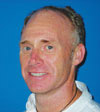 "We're just trying to get through the end of the year." For many, this was the mantra of 2009. Well, good news—the "Entering 2010" sign is now visible on the horizon. As we head towards that mile marker, let's take a quick glance in the rear view mirror. Here's what I see.
"We're just trying to get through the end of the year." For many, this was the mantra of 2009. Well, good news—the "Entering 2010" sign is now visible on the horizon. As we head towards that mile marker, let's take a quick glance in the rear view mirror. Here's what I see.
This past year, a new administration entered the White House and our editorial perspective deliberately considered "the world in transition". Each month, our lead article covered the changes in that issue's technology or market related theme. Over the course of the year, we looked at the changing state-of-the-art in antenna technology as reflected in the papers presented at the Allerton Antenna Symposium (January); we reported on the evolution in nano-scale system-in-package technology (February), the on-going battles between GaAs and Silicon devices in the PA arena (April) and the competition between high voltage RF transistor technologies (June). In test and measurement equipment, the Journal covered instrument advances for the emerging 4G market (March) and we took a historical look at the impact of RF design software on hardware development (July).
Where government and commerce intersect, we reported on the need for greater bandwidth capacity via satellite links for US armed forces (August) and unserved/underserved rural communities via microwave backhaul and middle-mile infrastructure (October). Our IMS and EuMW show issues moved away from listing conference schedules, in favor of reporting on the products and companies at the exhibition itself. The industry needs this watchful eye on both the technology and business of high frequency electronics and so we deliberately steered our editorial in that direction.
In 2009, electronic media was embraced by our audience in greater numbers than ever before. The MWJ/Besser webinar series attracted nearly 10,000 engineers and managers. The positive response to these events, based on feedback, attendance and the quality of the Q&A sessions has convinced me that expert-based webinars will play a significant role in disseminating information for years to come.
This past year, we launched several social media initiatives and discovered that LinkedIn, Facebook and Twitter not only complement our traditional print and electronic content distribution channels, but also create a platform for our audience to communicate directly with us and each other. The RF and Microwave community on LinkedIn is quickly approaching 2,000 members, each with access to insider information on jobs, business opportunities and vital industry-related discussions.
The Microwave Journal website doubled as a community message board by hosting multiple Twitter feeds. At IMS and EuMW, our web- site facilitated twittering exhibitors as they provided show updates on product releases, demos and promotional activity. A sizable number of tweets from many sources proved that the marketing arm of the microwave industry is ready to adopt these new forms of communication. It is all part of the world in transition.
Looking at 2009 in the rear view mirror, I see a year like no other; an industry that met and in some cases exceeded the modest goal of "getting through it". With lots of belt-tightening and budget cut-backs, the vast majority of companies survived. Quantifying the health of our industry through this recession, I offer the following observation:
The number of pages in a trade magazine often reflects the health of the industry it serves. Page counts are dictated by the number of placed advertisements, which in turn reflects the level of investment companies are willing and able to make in marketing their own products (setting aside advertising shifts from print toward the Internet). Based on this metric and from the Journal's perspective, while it was a tough year, the microwave industry fared far better than the Dow Jones. Similar trends, but the plunge was not as deep, the recovery more robust. Of course, this is a broad observation; individual results may vary.
Looking at the road ahead, I see many recession-fueled changes: A renewed interest in engineering, science, education and taking on big challenges such as green energy, transportation, and technology's role in lowering the cost of health care. The Journal will keep an eye on these changes as we investigate and report next year's editorial theme—the microwave supply chain. As for 2009, stick a fork in it. It's done.
